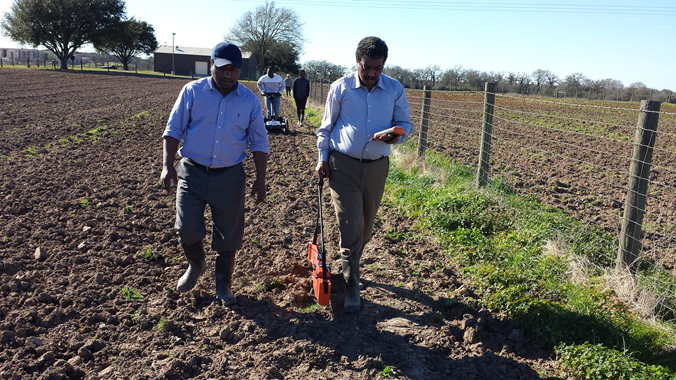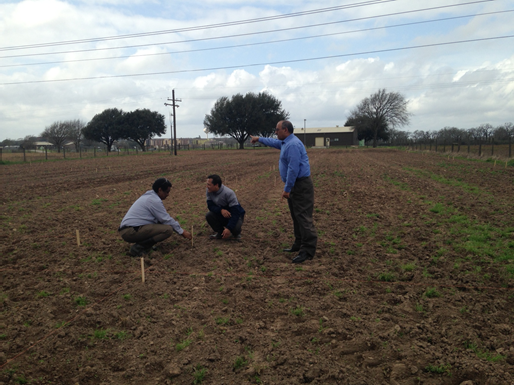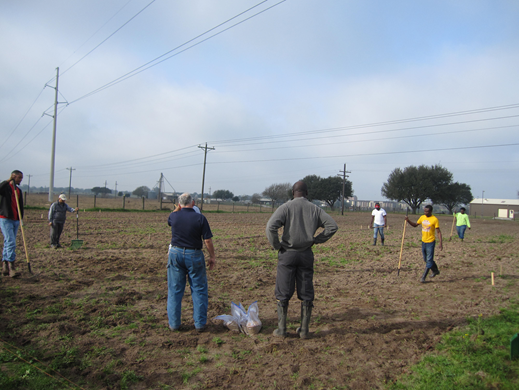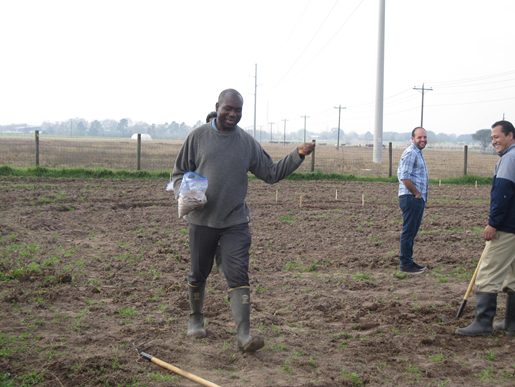Cover crops are known for their benefits to farmers and ranchers since they can improve soil quality and health, suppress weeds, reduce pollution and erosion among other environmental benefits. However, information on the most suited cover crop for south east Texas is lacking. A multi-disciplinary team* from the Cooperative Agricultural Research Center has been working on a cover crop performance experiment since late last year. This team is evaluating the performance of four different cover crops (Winter Rye, Winter Wheat, Crimson Clover, Hairy Vetch), four combinations (Winter Rye-Crimson Clover, Winter Rye-Hairy Vetch, Winter Wheat-Crimson Clover, Winter Wheat-Hairy Vetch), and a Control treatment (no cover crop).
The team member scanned the site with EM38, an electromagnetic sensor, and a ground penetrating radar to examine the soil spatial variability of the experimental site (Figure 1).

Figure 1. Post-doctoral scholars, Almoutaz ElHassen and Haimanote Bayabil, and their students are scanning the field using EM38 and ground penetrating radar.

Figure 2. Ripendra Awal, Almoutaz ElHassen and Ali Fares are discussing the experimental layout before seeding the different treatments.
During the first week in February, the team demarked the 27 plots of the experiment (Figure. 2) and seeded them with the nine treatments (Figures 3 and 4).

Figure 3. Farm Director, Louis Nuti, Research Scientists, Peter Ampim, and Ram Ray, and their students working across the field seeding the different treatments.

Figure 4. Peter Ampim, Research Scientist, is seeding one of the treatment plots.
The team members will be monitoring the progress of this experiment over the next 3 to 4 months. They will monitor crop growth parameters, weed pressure, and soil organic content at the end of the experiment. Results will be shared with participants at the upcoming Agricultural Field Day. They will also be shared with farmers, ranchers and other stake holders to help them select the appropriate cover crops suited for this part of the state.
*The Team members include research scientists, post-docs, faculty members (Peter Ampim, Ripendra Awal, Ram Ray, Haimanote Bayabil, Almoutaz El Hassen, Ali Fares, Richard Griffin, Louis Nuti, and Erich Risch), and their students (Abayomi Adekanmbi, Yassine Cherif, Yannick Kablan. and Oluwafemi Paul Olaleye).
Ali Fares, Ph.D.
Interim Associate Director, Cooperative Agricultural Research Center
alfares@pvamu.edu
(936) 261-5019

